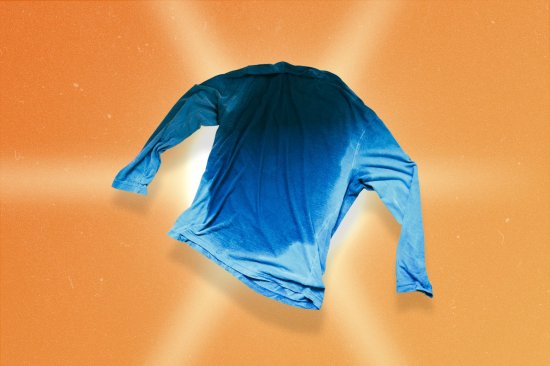
Here's how to stay cool in a heatwave.
When temperatures rise, many people strip down. But when you’re dressing for a hot day, how to get away with wearing as little as possible isn’t the only factor to consider.
In hot temperatures, your body sweats to cool itself down. When sweat evaporates, it takes some of your body heat with it, helping to keep you comfortable. So when you’re getting dressed during a heatwave, it’s best to choose garments that will make the evaporation process as easy as possible, says Guowen Song, who runs the Lab for Heat and Thermal Protection Research at Iowa State University.
[time-brightcove not-tgx=”true”]“We human beings really need to balance heat and moisture to feel good,” Song says. “That’s why in different seasons we wear different things. The clothing mediates how much heat dissipates into the environment.”
Here’s what to wear to stay comfortable on a hot day.
Loose or sweat-wicking clothes
Avoid tight clothing, as these garments will keep sweat trapped on your skin, says Kimberly McMahon, who leads the National Weather Service’s Public Weather Services Program. “If the sweat’s just sitting on you, then it’s not evaporating, and therefore it’s never actually leaving the surface of your body and it’s harder for your body to stay cool,” McMahon explains. Loose, flowy garments are usually a better choice on sweltering days.
The exception: technical fabrics, like those used in athleisure, are often specifically designed to wick away sweat, Song says. Even tighter-fitting garments using these synthetic materials, like polyester and nylon, can help keep you cool and dry. Look for terms like “sweat-wicking,” “moisture-wicking,” or “quick dry” on the label.
Read More: What’s the Best Kind of Sunscreen?
And, contrary to what you might assume, wearing as little clothing as possible isn’t always the best strategy. Garments that provide some coverage prevent the sun from beating down directly on your bare skin, says Margaret Frey, a professor of fiber science and apparel design at Cornell University. “We can look for inspiration from traditional dress from very warm climates,” Frey says. “In a lot of them, they are wearing things that actually cover most of the body but are not tight-fitting.” People from desert climates, for example, often wear full-body robes.
Breathable fabrics
For everyday summer-wear, look for lightweight, breathable fabrics like cotton and linen, Frey suggests. These fibers will not only allow any natural breezes to pass through your clothes and cool the skin, but also allow your sweat to escape and evaporate. If you’re not sure if your clothing is breathable, there’s an easy way to find out: just put your hand inside a garment, blow on it, and see if you can feel your breath on your hand, Frey suggests.
If you’re going to be exercising or sweating heavily, however, Song says you may want to go for a synthetic, moisture-wicking fabric. Natural fibers like cotton and linen absorb sweat, whereas engineered textiles “dry fast and transport your moisture to the outside,” he says.
Light colors
There’s a reason white clothing is popular in the summer. Garments in dark colors like black, navy, and forest green absorb more of the sun’s UV radiation than light-colored clothes. Researchers in Japan have run experiments in which multiple polo shirts—identical except for their colors—are left outside on sunny days. The dark shirts get significantly hotter than the light shirts even after a relatively short time outside, they report. For that reason, Song, McMahon, and Frey all recommend light-colored clothing during the summer.
But some researchers argue it’s not that simple. Remember the robes worn in desert climates? Those worn by the Bedouin people in North Africa and the Middle East are traditionally black—a choice that some scientists argue is a smart one, because while the robe itself absorbs more heat than a white one would, that heat does not necessarily reach the skin.
Read More: How to Cool Down When It’s Really Hot Outside
And there is a tradeoff to wearing light clothing, Frey adds. Light-colored clothes aren’t as effective at protecting your skin from the sun as dark clothes are, meaning you may be more susceptible to sunburns and skin damage if you’re decked out in gauzy white cotton. Compensate by wearing plenty of sunscreen—and by washing your clothes regularly, since many commercial detergents include brightening agents that may also boost UV protection, Frey says.
Functional accessories
Think strategically about what to wear from head to toe. A wide-brimmed hat can provide some extra shade on a sunny day, McMahon says, while open-toed shoes can help with ventilation, Song says.
Last but not least, Song says, choose undergarments made from sweat-wicking materials. “They’re in contact with your skin,” he says, so picking the right ones can make a big difference for comfort.